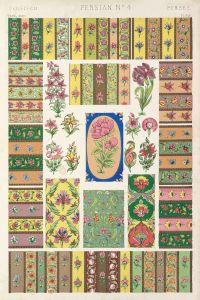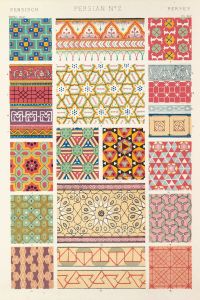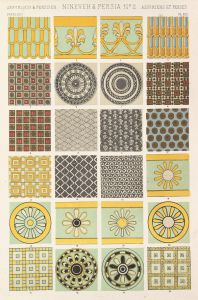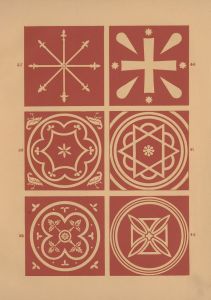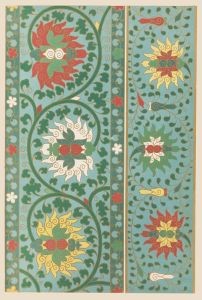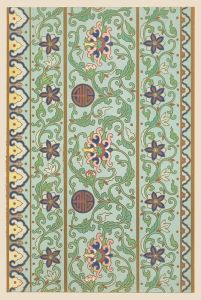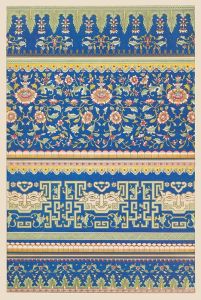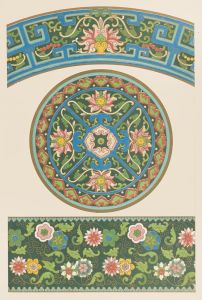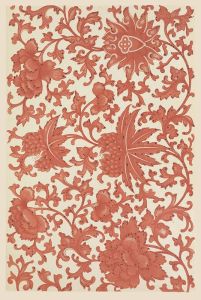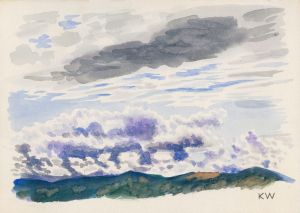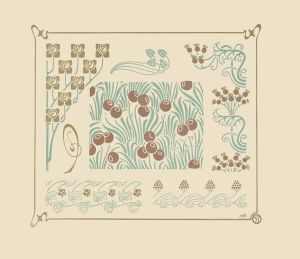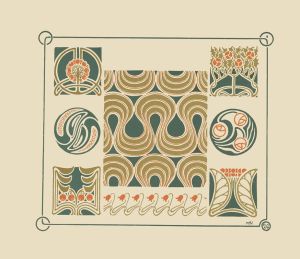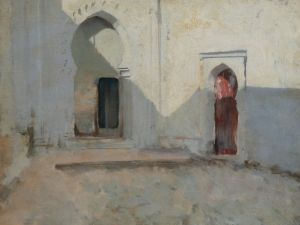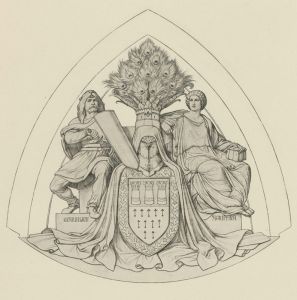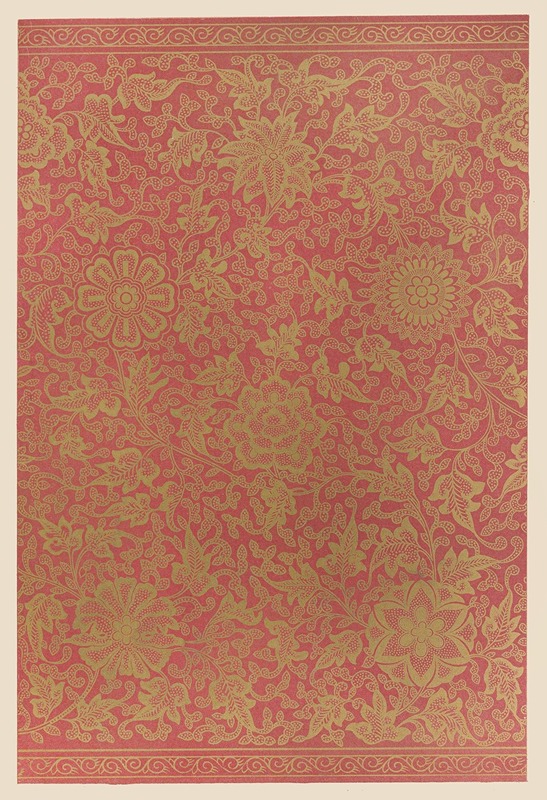
Examples of Chinese ornament, Pl.35
A hand-painted replica of Owen Jones’s masterpiece Examples of Chinese ornament, Pl.35, meticulously crafted by professional artists to capture the true essence of the original. Each piece is created with museum-quality canvas and rare mineral pigments, carefully painted by experienced artists with delicate brushstrokes and rich, layered colors to perfectly recreate the texture of the original artwork. Unlike machine-printed reproductions, this hand-painted version brings the painting to life, infused with the artist’s emotions and skill in every stroke. Whether for personal collection or home decoration, it instantly elevates the artistic atmosphere of any space.
"Examples of Chinese Ornament, Pl.35" is a plate from the influential design book "The Grammar of Ornament," authored by Owen Jones and first published in 1856. Owen Jones was a British architect and designer known for his work in color theory and his contributions to the decorative arts. His book aimed to provide a comprehensive collection of design patterns and motifs from various cultures around the world, serving as a resource for designers and architects.
"The Grammar of Ornament" consists of 100 color plates, each showcasing different styles and motifs from diverse cultures, including Egyptian, Persian, Greek, Roman, Indian, and Chinese, among others. Plate 35 specifically focuses on Chinese ornamentation, reflecting the 19th-century European fascination with Asian art and design. This interest was part of a broader trend known as "Chinoiserie," which saw Western designers and artists drawing inspiration from Chinese artistic traditions.
Jones's work was groundbreaking for its time, as it was one of the first to systematically categorize and present ornamental designs from a wide range of cultures. His approach was both educational and inspirational, aiming to demonstrate the universal principles of design while celebrating the unique characteristics of each cultural style. The book emphasized the importance of understanding historical design principles to create new and innovative works.
Plate 35, like other plates in the book, is characterized by its vibrant use of color and intricate patterns. Jones was particularly interested in the use of color in design, and he developed a set of principles for color harmony that he applied throughout his work. These principles were influenced by his studies of Islamic and Eastern art, where he observed a more sophisticated use of color compared to contemporary Western practices.
The Chinese ornaments depicted in Plate 35 would have been drawn from a variety of sources, including textiles, ceramics, and architectural details. Chinese art is known for its symbolic use of motifs, such as dragons, phoenixes, and floral patterns, each carrying specific meanings and associations. These motifs were often used in combination with intricate geometric patterns and vibrant colors, creating a rich visual language that was both decorative and meaningful.
Jones's depiction of Chinese ornamentation would have been based on his observations and studies of Chinese art available in Europe at the time. This included items brought back by traders and explorers, as well as collections held in museums and private collections. His work contributed to a greater appreciation and understanding of Chinese art in the West, influencing generations of designers and artists.
Overall, "Examples of Chinese Ornament, Pl.35" is a testament to Owen Jones's vision of a global design language, where the beauty and complexity of different cultures could be appreciated and utilized in the creation of new artistic expressions. His work remains a valuable resource for those interested in the history of design and the cross-cultural exchange of artistic ideas.





